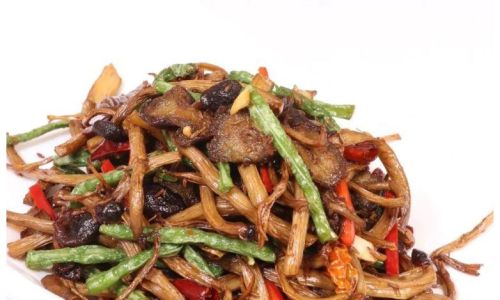Table of content
Introduction
Orange peels, often discarded without a second thought, hold immense potential beyond their role as waste. From enhancing culinary dishes to serving as natural cleaners, these vibrant rinds deserve a second chance. One question that frequently arises is whether orange peels can be refrigerated to extend their usability. This article explores the science behind refrigerating orange peels, the best practices for storage, and the creative ways to repurpose them. By understanding the composition of orange peels and the environmental factors that affect their shelf life, you can transform this kitchen byproduct into a versatile resource.
Understanding Orange Peel Composition
Orange peels are not mere waste; they are a powerhouse of bioactive compounds. The outermost layer, the flavedo, contains essential oils rich in limonene, a natural solvent and flavor enhancer. Beneath this lies the albedo, a spongy white layer packed with pectin, fiber, and flavonoids like hesperidin. These components contribute to the peel’s unique properties:
- Essential Oils: Provide aromatic and antimicrobial benefits.
- Pectin: Acts as a natural thickening agent and prebiotic.
- Flavonoids: Offer antioxidant and anti-inflammatory effects.
The interaction of these elements with environmental factors like temperature, humidity, and light determines how long orange peels remain usable. Refrigeration, by slowing down enzymatic reactions and microbial growth, can theoretically preserve these compounds. However, improper storage may lead to moisture buildup, causing spoilage or flavor degradation.
Factors Affecting Orange Peel Shelf Life
Several variables influence how long orange peels last:
- Moisture Content: Excess moisture accelerates mold and bacterial growth.
- Temperature: Warm environments speed up decomposition, while cold temperatures slow it.
- Exposure to Air: Oxidation can diminish essential oil potency and cause discoloration.
- Contamination: Residual sugars or dirt from the orange’s surface may harbor microbes.
Refrigeration addresses temperature and humidity concerns but requires careful execution to avoid introducing new issues, such as cross-contamination with other foods.

Refrigeration Basics: How Does It Work?
Refrigerators maintain temperatures between 32°F (0°C) and 40°F (4°C), creating an inhospitable environment for most spoilage-causing microorganisms. However, cold storage alone does not guarantee preservation; proper packaging and preparation are critical.
Humidity Control:
Most refrigerators have crisper drawers with adjustable humidity settings. Orange peels benefit from high humidity (around 95%) to prevent dehydration, which can cause them to become brittle and lose flavor.

Temperature Zones:
Store peels in the main compartment rather than the door, as the door experiences temperature fluctuations when opened frequently.
Step-by-Step Guide to Refrigerating Orange Peels
Follow these steps to maximize shelf life and quality:

Step 1: Cleaning and Preparation
- Wash Thoroughly: Rinse peels under cool water to remove pesticides, wax, or dirt. Use a vegetable brush if necessary.
- Dry Completely: Pat peels with a clean towel or air-dry them for 30 minutes. Residual moisture encourages mold.
Step 2: Choosing the Right Container
- Airtight Containers: Use glass jars or resealable plastic bags with minimal air exposure.
- Perforated Bags: For optimal airflow, punch small holes in plastic bags to prevent condensation.
Step 3: Storage Duration
- Whole Peels: Last 2–3 weeks in the refrigerator.
- Grated or Julienned Peels: Last 1–2 weeks due to increased surface area.
Step 4: Labeling and Organization
- Date containers to track freshness.
- Store peels away from strong-smelling foods (e.g., onions) to prevent flavor absorption.
Alternative Preservation Methods
While refrigeration is effective, other methods offer longer-term solutions:
Freezing
- Process: Place dried peels in freezer-safe bags. They’ll keep for 6–12 months.
- Uses: Ideal for zesting or infusing liquids, as freezing preserves essential oils.
Dehydrating
- Oven Method: Bake peels at 200°F (93°C) for 2–3 hours until crisp.
- Uses: Grind into powder for seasonings or brew into tea.
Candied Peels
- Recipe: Simmer peels in sugar syrup, then coat in granulated sugar. Store in an airtight container for up to 3 months.
Infused Oils or Vinegar
- Process: Submerge peels in olive oil or vinegar for 2 weeks. Strain and use in dressings or marinades.
Creative Uses for Refrigerated Orange Peels
Refrigeration buys time to explore these applications:

Culinary Uses
- Zest: Grate over salads, desserts, or cocktails.
- Syrups: Simmer peels with sugar and water for pancakes or cocktails.
- Marmalade: Combine peels with citrus juice and pectin for a classic spread.
Household Cleaning
- Natural Degreaser: Rub peels on greasy surfaces; the limonene cuts through grime.
- Air Freshener: Simmer peels in water with spices like cinnamon for a fresh scent.
Beauty and Wellness
- Face Masks: Mix ground peels with honey or yogurt for exfoliating masks.
- Bath Soaks: Add peels to bathwater for a citrus-scented soak.
Composting
- Chop peels into small pieces to accelerate decomposition in compost bins.
Potential Risks and Precautions
While refrigeration is safe, missteps can lead to spoilage:
- Mold: Discard peels if fuzzy green or black spots appear.
- Bacterial Growth: Avoid storing peels near raw meat to prevent cross-contamination.
- Flavor Changes: Prolonged storage may dull citrus notes; use within recommended timelines.
Environmental and Economic Impact
Refrigerating orange peels aligns with sustainability goals:

- Waste Reduction: Diverts peels from landfills, where they emit methane.
- Cost Savings: Replaces store-bought cleaning agents or spices.
- Energy Use: Modern refrigerators are energy-efficient, minimizing environmental impact.
Conclusion
Refrigerating orange peels is a practical, eco-friendly practice that extends their usability while unlocking culinary and household potential. By adhering to proper storage techniques and exploring creative repurposing, you can transform a simple kitchen scrap into a multifaceted resource. Whether you’re a home cook, a DIY enthusiast, or an eco-conscious consumer, the humble orange peel offers endless opportunities to innovate and reduce waste. Experiment with these methods, and discover how this often-overlooked ingredient can enrich your daily life.





0 comments